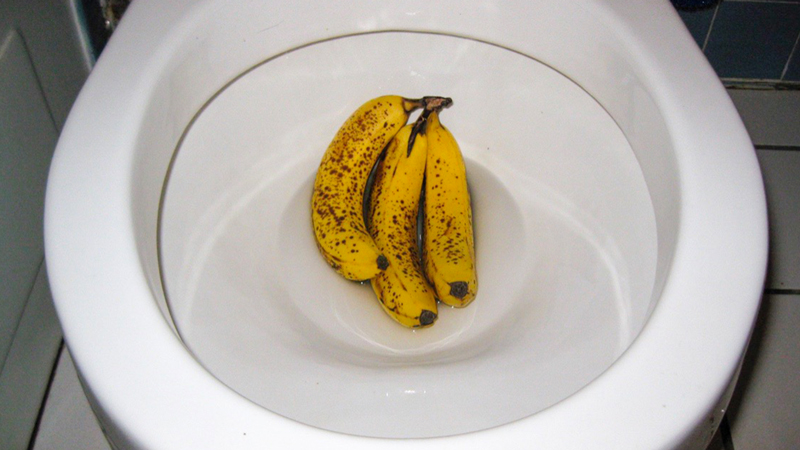Is it Suitable to Dispose of Food in the Toilet?
Is it Suitable to Dispose of Food in the Toilet?
Blog Article
Just about everyone may have their personal theory in relation to Flushing Food Down the Toilet?.

Intro
Many people are usually confronted with the dilemma of what to do with food waste, especially when it pertains to leftovers or scraps. One usual concern that arises is whether it's alright to purge food down the bathroom. In this article, we'll look into the reasons why individuals could take into consideration flushing food, the effects of doing so, and alternate approaches for proper disposal.
Reasons that people could consider flushing food
Absence of awareness
Some individuals might not recognize the prospective damage brought on by flushing food down the bathroom. They may mistakenly think that it's a harmless technique.
Comfort
Flushing food down the bathroom may appear like a fast and very easy solution to dealing with unwanted scraps, particularly when there's no close-by trash can offered.
Laziness
Sometimes, people may just choose to flush food out of sheer idleness, without considering the consequences of their activities.
Effects of flushing food down the toilet
Environmental influence
Food waste that winds up in rivers can contribute to air pollution and injury water communities. Furthermore, the water made use of to flush food can stress water sources.
Pipes concerns
Flushing food can cause clogged up pipelines and drains, triggering costly plumbing repairs and aggravations.
Types of food that need to not be flushed
Fibrous foods
Foods with coarse structures such as celery or corn husks can obtain tangled in pipelines and cause blockages.
Starchy foods
Starchy foods like pasta and rice can absorb water and swell, leading to blockages in pipes.
Oils and fats
Greasy foods like bacon or food preparation oils must never be purged down the toilet as they can strengthen and create clogs.
Proper disposal methods for food waste
Using a waste disposal unit
For homes geared up with waste disposal unit, food scraps can be ground up and flushed through the pipes system. Nonetheless, not all foods are suitable for disposal in this fashion.
Recycling
Particular food product packaging materials can be recycled, minimizing waste and decreasing ecological impact.
Composting
Composting is a green means to throw away food waste. Organic materials can be composted and utilized to enhance dirt for gardening.
The importance of appropriate waste administration
Decreasing ecological injury
Correct waste management practices, such as composting and recycling, assistance minimize air pollution and maintain natural deposits for future generations.
Shielding plumbing systems
By staying clear of the method of flushing food down the commode, homeowners can prevent costly plumbing repair services and preserve the honesty of their pipes systems.
Conclusion
In conclusion, while it may be alluring to purge food down the commode for comfort, it is very important to recognize the potential consequences of this action. By adopting appropriate waste administration practices and disposing of food waste responsibly, people can contribute to much healthier pipes systems and a cleaner atmosphere for all.
FLUSH FOOD DOWN THE TOILET?
FLUSHING FOOD CAN CAUSE BLOCKED DRAINS IN YOUR HOME
All of the plumbing fixtures in your home are connected to the same sewer pipe outside of your home. This outdoor sewer pipe is responsible for transporting all the wastewater from your home to the Council sewer mains. Even small pieces of food that go down the kitchen sink can cause problems for your sewer. It should therefore be obvious that flushing larger bits of food, such as meat, risks a clog in either the toilet itself or the sewer pipes. Flushing greasy food is even more problematic because oil coagulates when it cools, coating the interior lining of your pipes.
THE TOILET IS NOT A BIN
Food isn’t the only thing that people shouldn’t be flushing down the toilet. People use the toilet to dispose of all kinds of things such as tampons, makeup wipes, dental floss, kitty litter and even underwear. Water goes to great lengths to educate residents about the high costs and stress placed on wastewater treatment systems simply from people flushing the wrong stuff down the toilet. It costs taxpayers millions of dollars each year, and homeowners thousands in blocked drain repairs.
FLUSHING FOOD IS A WASTE OF WATER
Flushing food is a waste of our most precious resource - water. In June this year Level 1 water restrictions were introduced to protect water supply from drought conditions. Much of New South Wales continues to be affected by prolonged drought with recent figures revealing up to 97 per cent of the state remains in drought. Depending on whether you have a single or dual flush toilet, every single flush uses between five and 11 litres of water. In the current climate this is a huge amount of water to be wasting on flushing food that should be placed in the bin (or better yet, the compost).
https://www.jabplumbingsolutions.com.au/blog/can-you-flush-food-down-the-toilet

We had been made aware of that editorial on from a good friend on a different blog. In case you appreciated our blog entry if you please don't forget to pass it around. We value your readership.
Book Appointment Report this page